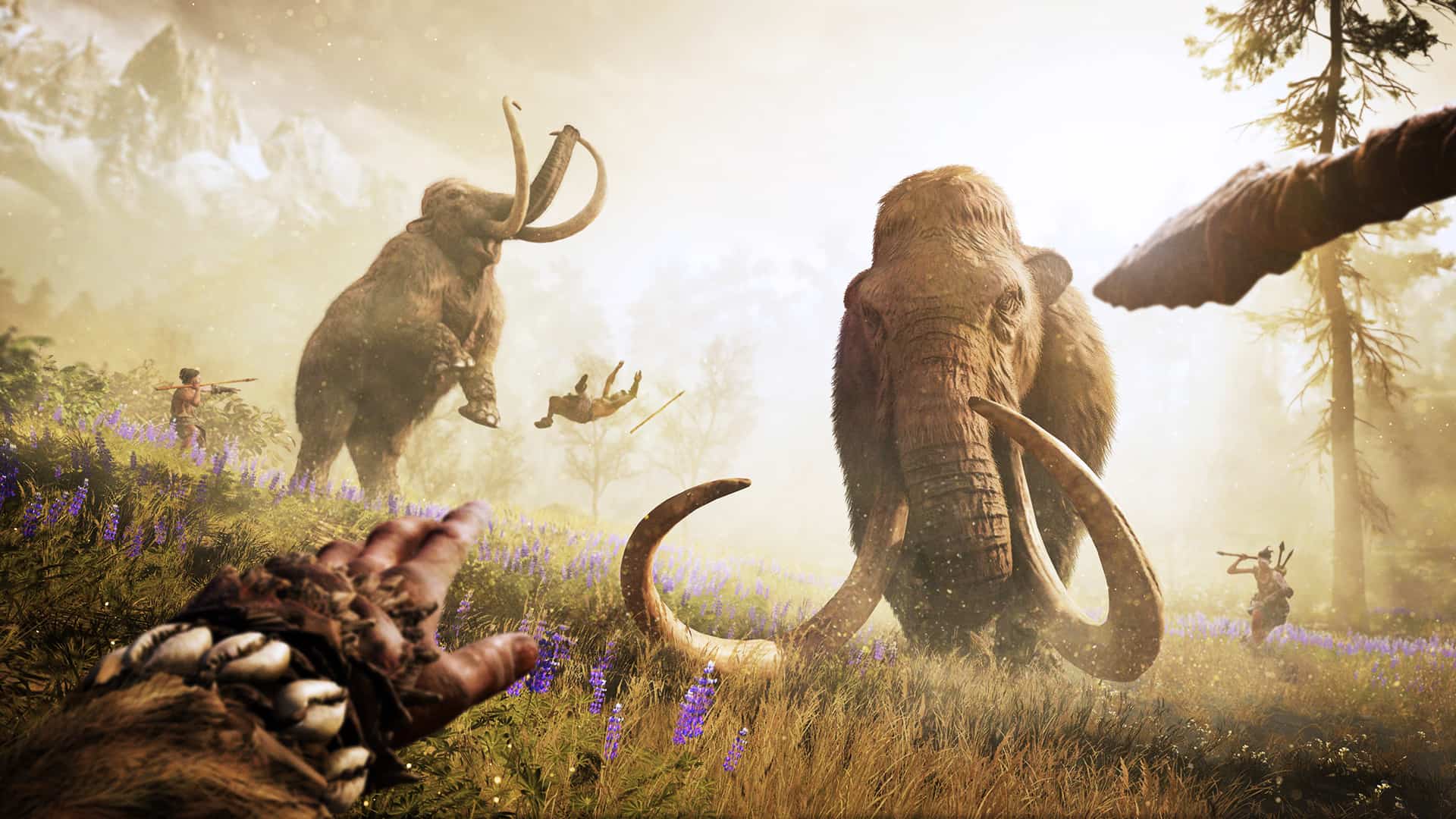In an era where video games (primarily those in ongoing franchises) are becoming more monotonous and studios elect to rehash the same properties over and over again, Ubisoft’s Far Cry Primal is the proverbial light at the end of the tunnel. Sure enough, that light isn’t always clearly luminous, somewhat muddied by its own ambitions and lack of a cohesive narrative. When the game focuses that ambition and embraces its own inherent sense of wonder, however, it becomes something more than a step above the usual Far Cry title. More than that, it’s a game that other studios should take note of, and hopefully – if I may be so boldly optimistic – learn a great deal from. Below are three vital lessons that Primal could bestow upon other long-running game franchises and their studios.
1. Sometimes simpler is better.
It seems almost silly to have to list this, but one of Far Cry Primal’s biggest strengths is how simplified it is. That’s not to say that there are a lack of features – frankly, the game is packed with content – but the removal of guns in favor of spears and bows set against its luscious-looking 10,000 BC time period comes off as remarkably simplified without sacrificing meaningful content. Imagine a Call of Duty more in line with the aesthetics of earlier games like Modern Warfare or even the somewhat recent Black Ops 2. I’m not advocating for all games to simplify for simplicity’s sake alone and strip away all the potential for next generation gaming per se, but adding a plethora of useless features to cover up significant flaws and design laziness is not the way.
From what I’ve been reading lately, Far Cry Primal – while still an example of what games can be again – has been accused of reusing the map layout of Far Cry 4, making it at least fall into that latter category of designer laziness. Of course, there’s also another reason: the time between games in franchises has gotten considerably shorter. There was nearly two years between Far Cry 4 and Far Cry 3, while there was only 15 months between 4 and Primal. It simply puts too much strain on designers and the finished product suffers because of it. Imagine if Far Cry Primal had been given several years to be perfected. It would more than likely be a masterpiece, as opposed to being two-thirds genius and one-third cautionary tale. Still, the fact that the Ubisoft Montreal team put so much effort and ingenuity into many vital and minuscule sections alike shows that they were at least using the creative sections of their brains instead of monetary gain parts. Which brings me to my next point.
2. Creativity is still the key to success.
For Far Cry Primal, Ubisoft worked with linguists to construct an entirely original language for the characters to speak, based on how communication would essentially be in that time period. What easily could have resulted in some sort of cheap gimmick to seem relevant actually enriches the experience. I actually felt like I was there in that time period, barbarically smashing heads with clubs and surviving in a harsh environment. And even when the game occasionally devolves into the unrealistic realms of spiritual visions and controlling animals with your own essence (or something like that), everything still feels genuinely creative. Some of the boldness involved somewhat evokes a time period when game studios were still willing to take risks and go all in on creative ambition. Not that anything in Primal is exactly new, at least when isolating it to its familiar game modes (i.e. capturing of bases, building of settlements and killing and skinning wild animals), but in context of the time period and the game’s ability to expertly meld the features together cohesively, it all feels like it’s new.
3. Gamers want compelling stories.
Like both one and two, this seems almost an obvious statement, yet it’s also where Far Cry Primal fails the most as a game. Ironically, it’s also where it has the most to teach other franchises, but more as a case of what not to do. While playing, I’ve never had a problem investing in the time period conveyed, or the awesome beast taming functions, but the lack of a story – or more importantly, interesting characters – kept me from caring about anything on an emotional level. Sure, the moments that call for your pulse to rise do work their magic, but like a summer blockbuster, you don’t really care after it’s over. Again, it’s hard not to imagine if the story kinks could have been worked out if the developers had been given more time.
Still, it’s difficult to fault the game too much. Other than the disappointing reuse of map layouts and a mostly nonexistent story, Far Cry Primal is just too much fun and ingeniously crafted on technical and creative levels to deny. Ubisoft themselves should be taking notes and applying it to Assassin’s Creed, another game franchise that started out brilliant and slowly devolved into a repetitive, buggy mess that failed to capture the magic of earlier entries. Maybe instead of modernizing the features and story setting to cover up the aging mechanics, it’s time for the game series to simplify. Tell a more personal narrative with compelling characters again, and avoid using feature over-stuffing as a crutch to prop up shoddy design. Perhaps I’m being too optimistic and nothing will change at all, and we’ll continue to get half-finished games with the rest of the features packed in later as DLC. Still, I want to believe (sorry, too much X-Files lately) that Far Cry Primal is just the first step toward a whole new generation of game franchises redefining themselves for the modern era of gaming.
- Corey Hoffmeyer



